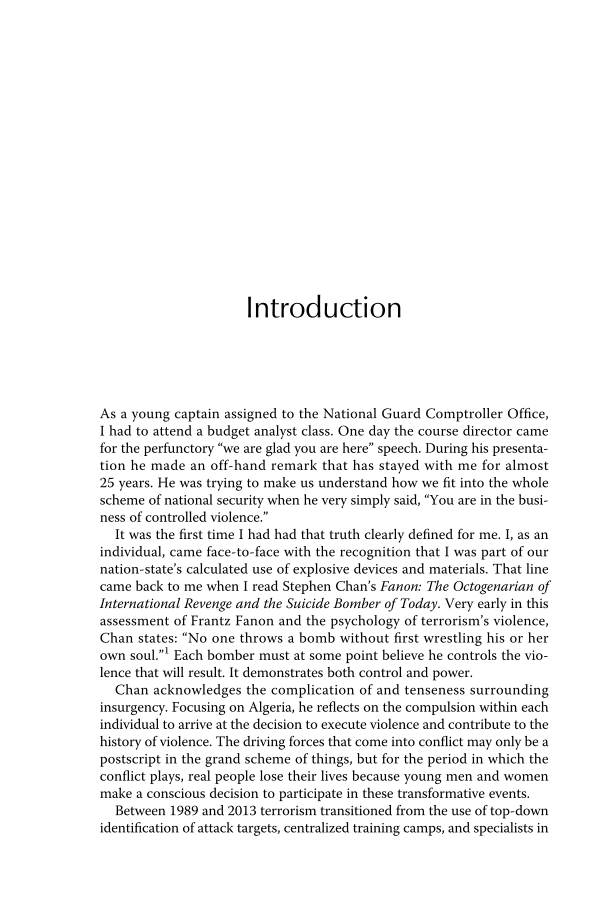Introduction As a young captain assigned to the National Guard Comptroller Office, I had to attend a budget analyst class. One day the course director came for the perfunctory “we are glad you are here” speech. During his presenta- tion he made an off-hand remark that has stayed with me for almost 25 years. He was trying to make us understand how we fit into the whole scheme of national security when he very simply said, “You are in the busi- ness of controlled violence.” It was the first time I had had that truth clearly defined for me. I, as an individual, came face-to-face with the recognition that I was part of our nation-state’s calculated use of explosive devices and materials. That line came back to me when I read Stephen Chan’s Fanon: The Octogenarian of International Revenge and the Suicide Bomber of Today. Very early in this assessment of Frantz Fanon and the psychology of terrorism’s violence, Chan states: “No one throws a bomb without first wrestling his or her own soul.”1 Each bomber must at some point believe he controls the vio- lence that will result. It demonstrates both control and power. Chan acknowledges the complication of and tenseness surrounding insurgency. Focusing on Algeria, he reflects on the compulsion within each individual to arrive at the decision to execute violence and contribute to the history of violence. The driving forces that come into conflict may only be a postscript in the grand scheme of things, but for the period in which the conflict plays, real people lose their lives because young men and women make a conscious decision to participate in these transformative events. Between 1989 and 2013 terrorism transitioned from the use of top-down identification of attack targets, centralized training camps, and specialists in
Document Details My Account Print multiple pages
Print
You have printed 0 times in the last 24 hours.
Your print count will reset on at .
You may print 0 more time(s) before then.
You may print a maximum of 0 pages at a time.









































































































































































































































































